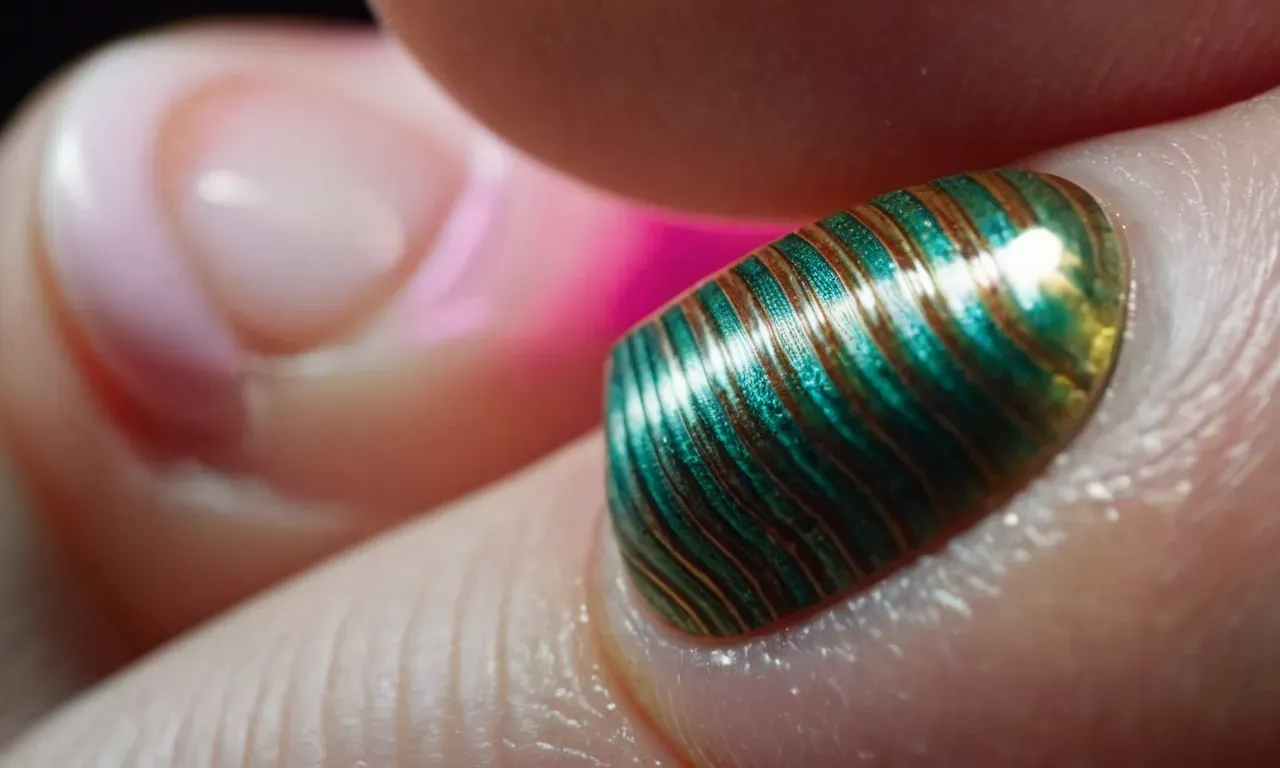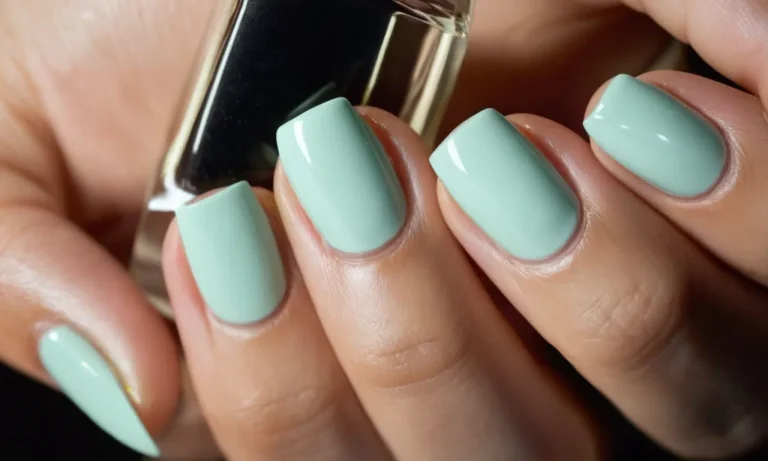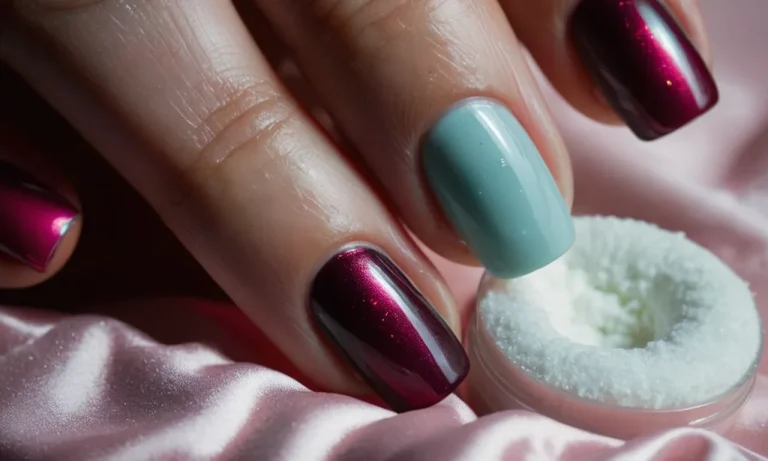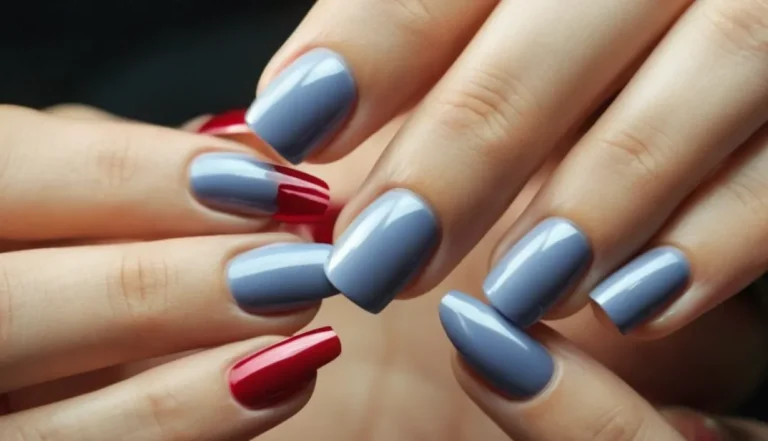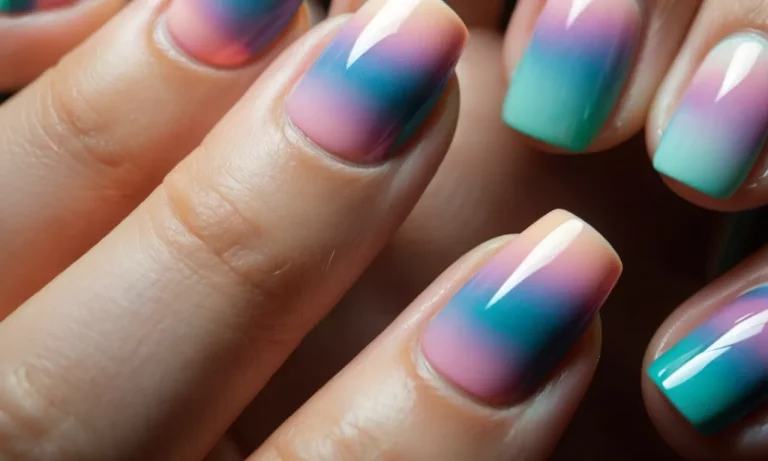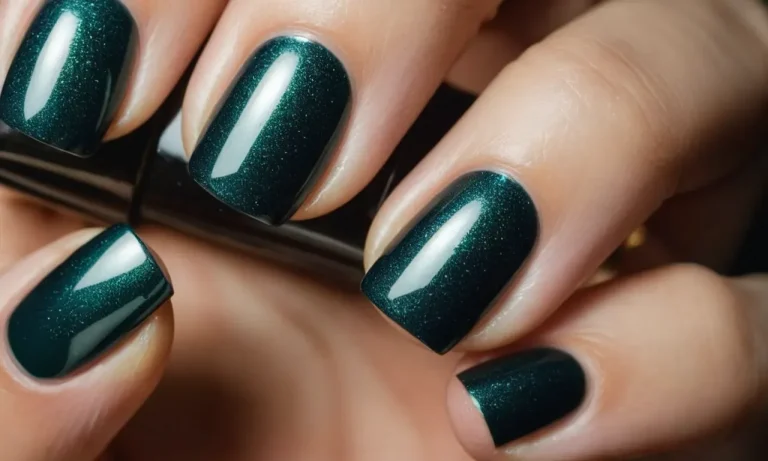Why Does My Pinky Toe Nail Grow Up?
If you’ve noticed your pinky toe nail growing in an upward direction, you’re not alone. Many people deal with this pesky nail issue. While it may seem harmless, an ingrown pinky toenail can become painful and inflamed over time.
If you’re short on time, here’s a quick answer to your question: The pinky toenail grows up because of pressure from shoes, improper nail trimming techniques, fungal infections, and genetics.
In this comprehensive article, we’ll explore the reasons why your pinky toenail grows upward, signs and symptoms, treatment options, prevention tips, and frequently asked questions.
What Causes an Ingrown Pinky Toenail?
Poorly fitted shoes and socks
Wearing shoes that are too tight or socks that are too narrow can put pressure on the pinky toe, forcing the nail to grow into the skin. This consistent pressure pushes the nail sideways instead of allowing it to grow straight out.
According to the American Academy of Orthopaedic Surgeons (AAOS), wearing properly fitted shoes and socks is key to preventing ingrown toenails.
Improper nail trimming
Cutting your nails too short or rounding off the corners can make you more prone to developing an ingrown pinky toenail. The AAOS recommends trimming your nails straight across and never below the toe tip.
You can also file nails with an emery board to help train them to grow straight out instead of into the skin.
Fungal infection
A fungal infection in the nail bed can cause swelling, redness, and pain in the toe. As the infection progresses, it can distort nail growth. According to the Mayo Clinic, an ingrown toenail is a common secondary condition with fungal infections.
Treating the infection is important to allow proper nail growth.
Genetics and hereditary factors
Some people may be genetically predisposed to developing ingrown nails. You are at higher risk if other members of your family also suffer from chronic ingrown toenails. Abnormally curved nails that grow downward into the skin can run in families.
Signs and Symptoms of an Ingrown Pinky Toenail
Pain and tenderness
One of the most common symptoms of an ingrown pinky toenail is pain and tenderness around the nail. As the nail edge grows into the surrounding skin, it can cause inflammation and discomfort. The pain may start out mild but can worsen over time, especially when wearing tight shoes or socks that put pressure on the toe.
Many people describe the pain as sharp, throbbing, or tender when touching the area. Trying to walk or put weight on the affected toe can make the pain flare up.
Redness and swelling
The inflammation caused by an ingrown toenail often leads to redness, warmth, and swelling around the nail and side of the toe. This occurs as the body reacts to the invading nail edge and sends increased blood flow to the area.
The swelling may be mild at first but can become more pronounced over time. It is usually most noticeable along the side of the toenail where the edge is growing into the skin.
Pus draining from nail
As the ingrown part of the nail cuts into the skin, it can introduce bacteria and cause an infection. This may lead to yellow or white pus oozing from the side of the nail. The drainage may also have a foul odor. Along with pus, bleeding can sometimes occur if the nail erodes a small blood vessel.
Pus and bleeding are signs of a more serious infection that requires medical treatment.
Thickened nail
Repeated trauma from an ingrown toenail can cause the nail to become thicker over time. As the keratin continues growing into the skin, layers build up and the nail becomes hardened and distorted. The affected part of the nail may look wider or bulbous compared to the rest of the nail.
Trimming the nail may become more difficult due to the increased thickness.
Discolored nail
An ingrown pinky toenail may change color as it becomes infected or inflamed. It may take on a yellow, grey, or greenish hue instead of a normal pink color. Darkening underneath the nail can also occur from bleeding beneath the nail bed.
However, a bruised toenail may also indicate an underlying medical condition, so it’s best to get it examined.
Treatment for an Ingrown Pinky Toenail
Soaking the foot
One of the first things to try for an ingrown toenail is soaking the affected foot in warm water. This helps soften the skin and reduce swelling and inflammation around the nail. Soak the foot for 15-20 minutes 2-3 times a day. You can add Epsom salts, which may help draw out infection.
After soaking, gently lift the corner of the nail with a cotton swab or sterile gauze to allow the skin to dry underneath. This prevents further irritation and embedding of the nail edge.
Antibiotics
If the area around the ingrown nail is red, swollen, or has pus, it may be infected. Your doctor can prescribe oral or topical antibiotics to treat the infection. Common options are cephalexin, dicloxacillin, or clindamycin. Taking antibiotics helps resolve swelling and discomfort more quickly.
You’ll still need to treat the underlying cause by cutting/removing the ingrown part of the nail.
Minor surgery
For recurring or severe ingrown nails, a minor outpatient procedure may be necessary. This involves numbing the toe and cutting out the ingrown section of nail. The doctor may also destroy the nail matrix (root) on that side to prevent regrowth.
This wedge resection prevents the edge of the nail from digging into the skin. Recovery time is about 2 weeks. More complicated surgery may be an option if the nailmatrix was not fully removed the first time.
Permanent nail removal
In rare cases where the ingrown nail keeps coming back despite other treatments, permanent removal of part or all of the nail may be recommended. This involves surgically destroying the nail matrix so that part or all of the nail does not grow back.
Chemical cauterization, laser ablation, or radiofrequency ablation are techniques a podiatrist may use. Total removal of the toenail is known as a complete matrixectomy. This permanent option is only considered when other treatments have failed and the ingrown nail continues to cause pain and infection.
Prevention Tips for Ingrown Pinky Toenails
Wear properly fitted shoes
One of the most common causes of ingrown toenails is wearing shoes that are too tight or narrow for your feet. When your toes are constantly squeezed together in tight shoes, it puts pressure on the nails and causes them to grow into the skin.
To prevent this, make sure to wear properly fitted shoes that allow enough room for your toes to move comfortably without rubbing against the sides or top of the shoe. If your shoes are too narrow, consider sizing up or looking for wider options like shoes with a round or square toe box.
Trim nails straight across
Cutting your toenails at an angle or rounding the edges can make them more likely to dig into the skin and become ingrown. To help avoid this, always trim your nails straight across instead of curving them at the edges. Use sharp nail clippers and trim your nails just short of the end of your toes.
Leave them slightly longer on the sides to help the nail grow straight out instead of into the skin. Avoid cutting into the corners of the nails as this can trigger ingrowth.
Treat fungal infections
A fungal toenail infection can also cause changes in nail shape that lead it to become ingrown. The infection causes the nail to thicken or get brittle, making it more likely to curve and grow into the skin.
See a podiatrist at the first sign of a fungal nail infection, which can include thickening, discoloration or brittleness. Prescription antifungal medication may be needed to clear up the infection and prevent complications like ingrown toenails.
Pad areas around the nail
Placing padding around toenails prone to ingrowth can help minimize pressure and friction from shoes. Options like silicone toe caps, gel toe separators, moleskin strips or cotton balls can keep the nail lifted away from the skin.
Be sure to replace the padding regularly and keep the area clean and dry to prevent infection. This can provide temporary relief while you address the underlying cause of recurrent ingrown nails.
Consider wider toe boxes
If narrow shoes seem to be the culprit behind your ingrown toenails, try switching to footwear with wider toe boxes. Shoes like sandals, mary janes, and sneakers often provide more room for toes to spread out comfortably without rubbing against the sides.
Boots with a square or round toe like Doc Martens can also create less pressure than shoes with a narrow, pointy toe box. Wider widths and sizes can also help create enough space for your toes. Talk to a podiatrist if you need recommendations for shoes that won’t aggravate ingrown nails.
Frequently Asked Questions
Is an ingrown pinky toenail serious?
An ingrown pinky toenail can be painful, but it’s usually not serious if treated early. The nail edge grows into the skin and causes redness, swelling, and infection. Left untreated, it may worsen and become severely infected. So it’s important to take care of an ingrown nail as soon as you notice it.
How long does it take to heal?
With proper care, an ingrown pinky toenail can heal in 1-2 weeks. Here’s a general timeline:
- Days 1-3: Soak your toe in warm water to soften the skin and reduce swelling and pain.
- Days 4-7: The swelling and pain should improve. Keep soaking and bandaging your toe.
- Days 8-14: The nail edge should start growing out naturally as the skin heals. Pain and swelling continue to decrease.
Severe or infected ingrown nails may take longer to heal – up to 4 weeks. See your doctor if you don’t see improvement in 1-2 weeks.
When should I see a doctor?
See your doctor promptly if you have:
- Increased pain, swelling, or pus/discharge
- Nail edge embedding deeper into the skin
- Fever or red streaks coming from the nail
- Diabetes or compromised immune system
- Numbness/lack of feeling in the toe
These can be signs of a serious infection that may require antibiotics or surgical removal of part of the nail. Treating it early prevents the infection from spreading.
Can I prevent ingrown pinky toenails?
You can help prevent ingrown pinky toenails by:
- Wearing properly fitted shoes – avoid tight shoes that crowd your toes
- Cutting your nails straight across, not rounded at the edges
- Not picking at the nail edges with sharp tools
- Applying moisturizer daily to keep the nail edges soft
If you’ve had an ingrown nail before, these tips can help prevent another one from developing.
What home remedies help ingrown pinky toenails?
These self-care remedies can treat mild ingrown pinky toenails:
- Soak your toe in warm water 2-3 times a day for 15-20 minutes to reduce swelling and soften the skin.
- Gently lift the nail edge with a cotton swab soaked in alcohol after soaking to help it grow out.
- Bandage your toe smoothly after soaking, leaving the nail edge uncovered.
- Apply antibiotic ointment daily under the nail edge to prevent infection.
- Take over-the-counter pain relievers like acetaminophen or ibuprofen for pain.
- Wear open-toed shoes or sandals to avoid pressure on the toe while it heals.
See your doctor if symptoms don’t improve in 1-2 weeks with home treatment. Self-treating too long can worsen the problem.
Conclusion
An ingrown pinky toenail can be annoying and painful. With some simple preventive steps, you can avoid this common nail issue. Wear properly fitted shoes, trim your nails properly, and treat any fungal infections early. If prevention fails, don’t delay treatment.
See your doctor promptly for medications or nail removal procedures if needed. With a little TLC for your feet, you can say goodbye to uncomfortable ingrown pinky toenails.

